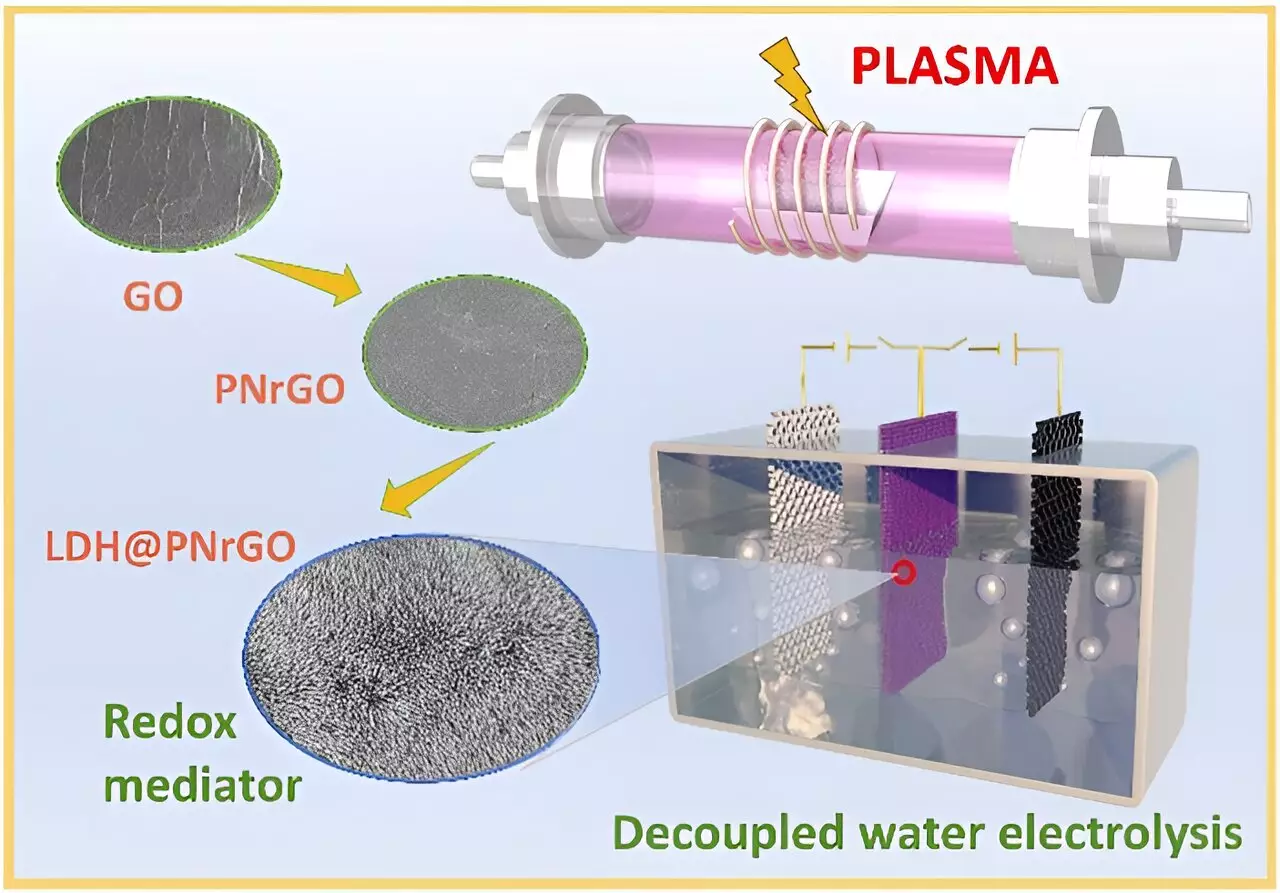In the relentless pursuit of sustainable energy solutions, the demand for innovative technologies to produce hydrogen efficiently is at an all-time high. Recognizing this imminent need, a research team led by Prof. Chen Changlun at the Hefei Institutes of Physical Science has made groundbreaking strides by developing cobalt-doped nickel hydroxide bipolar electrodes. These pioneering materials significantly enhance the performance and stability of water electrolysis processes. The importance of hydrogen as a clean fuel source cannot be overstated, making this advancement both timely and crucial.
Addressing the Challenges of Traditional Electrolysis
Traditional alkaline electrolyzers have long been constrained by their limitations, mainly due to their inefficiency in addressing the variability of renewable energy sources, as well as the mixing of hydrogen and oxygen gases at high pressures. The two-step water electrolysis method offers an elegant solution to these issues by spatially and temporally segregating hydrogen and oxygen production. This not only eliminates the need for costly membrane separators but also creates a promising pathway for more efficient hydrogen generation. The real challenge lies in advancing bipolar electrode materials that can overcome common limitations—problems such as insufficient electric buffering capacity remain a significant obstacle in the widespread adoption of these technologies.
The Breakthrough of Cobalt Doping
The research team’s application of cobalt doping to nickel hydroxide is where their work shines. By employing a one-step electrodeposition method on carbon cloth, they have enabled a remarkable increase in electrical conductivity and enhanced the storage performance of these electrodes. Additionally, this ingenious modification mitigates the occurrence of unwanted parasitic oxygen production during hydrogen generation, a frequent pitfall in traditional methods. Thus, the transition from conventional electrodes to cobalt-doped ones not only represents a technical evolution but also showcases the potential for real-world application in hydrogen production.
Catalysts that Redefine Efficiency
Equally impressive are the development of non-noble metal catalysts, which include molybdenum-doped nickel-cobalt phosphide and innovative plasma-induced iron composite cobalt oxide bifunctional electrodes. These catalysts exhibit remarkable durability and catalytic activity. By allowing for the decoupled production of hydrogen and oxygen through alternating current directions, the electrodes achieve notably low cell voltages and high energy conversion efficiency—an essential milestone for large-scale hydrogen production.
Expanding Horizons with Plasma Technology
The researchers also tackled the limitations of layered double hydroxide (LDH) electrodes through the application of non-thermal plasma technology. The introduction of nitrogen-doped nickel-cobalt LDH and nitrogen-doped reduced graphene oxide/nickel-cobalt LDH electrodes demonstrates a substantial leap in both capacity and conductivity. This advancement is instrumental as our society leans more heavily on hydrogen for applications in areas like 5G infrastructure and data centers, which necessitate robust hydrogen storage solutions.
As we move closer to a sustainable energy economy, the performance indicators established by Prof. Chen Changlun and his team not only align with global benchmarks but also signify a critical step towards the commercial viability of hydrogen production technologies. The interplay of materials science and sustainable engineering unveiled in this research is a testament to innovation’s power in addressing our pressing energy needs. The future of hydrogen production is not just promising; it is now within our grasp, thanks to these remarkable advancements.

